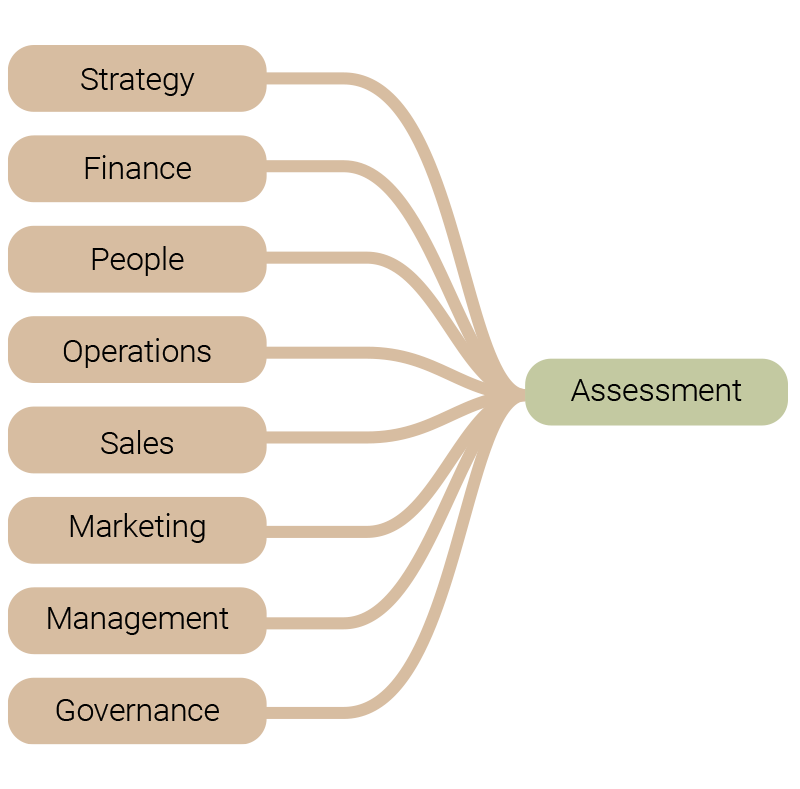
A common question that comes up in our peer mentoring groups and 1-1 company work is, “How does our organizational set up compare to others?”
They want to know what they’re missing. And want to know where they should invest time and money — and where they shouldn’t.
Because a company isn’t born with processes and structures in place. When a company is small, a few people can wear a lot of hats, and communication is direct and personal. But as the business grows, roles become more specialized, you start to create separate departments, an org chart and a management team. You put in place regular meetings and start to delegate responsibility for different areas of the business.
But even for those companies who invest in it, their structure and process evolution nearly always lags behind revenue growth. Why? It’s difficult to make time and budget available for building infrastructure. And frankly, implementing a new information system or adopting a company-wide authority matrix are not sexy or fun. They do not lead immediately to higher revenue and profit, and are often seen as costly overhead and creeping bureaucracy.
But without these investments, growth eventually will stall, and decreasing profits are likely to follow.
Whether you have a for-profit business, non-profit social enterprise or public institution, there are basic structures and processes you need to get work done efficiently and effectively.
These include everything from an org chart that outlines who reports to whom to job descriptions to how decisions get made and how progress is measured.
Structure is critical. A 2022 survey by Barclays found that nearly half of small and medium sized businesses lacked a clear strategy or plan.
In our own research, we found a dearth of useful checklists or tools that let you compare your company’s organizational set-up to a benchmark – to what is typically found in successful businesses. So, we created the Business Inventory to help answer these questions. It’s a free, quick survey of organizational structure and processes that gives you a read on how your business functions.
By taking the Business Inventory, you’ll get to self-assess your business’s strategy, management, finance and administration, people and culture, sales and marketing, and operations. You will also gain new insights about your role, and the relationship between your work in the company and the rest of your life.
The Business Inventory has 50 questions, and takes less than 15 minutes to complete. It comes with a report with insights based on the hundreds of businesses we’ve worked with.
Reviewing and updating how a business does what it does is an ongoing process. For most companies, it happens in fits and starts, only when it’s clear they’ve outgrown the current ways of doing things. You know something needs to change because balls are getting dropped, and it feels like you are stuck. One entrepreneur friend described this feeling as “wading through molasses” every day at work. Not a lot of fun.
We believe it’s important to take a step back from time to time and assess what’s working and what’s not. The Business Inventory is a great place to start.